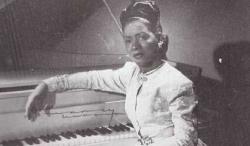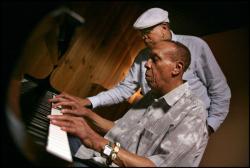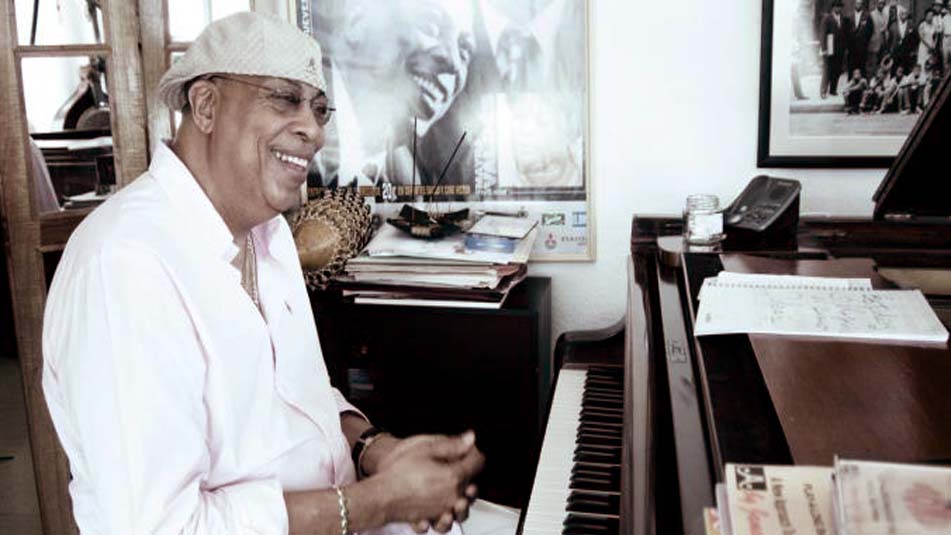Equally important to the nationalist piece is the “Africanization” of Spanish-derived music in Cuba that would further define both the repertoire as well as the performance practice, as idioms of African folklore contributed a significant amount to this evolution. Furthermore, Cuban popular music was some of the first Caribbean music to be recorded and widely distributed by American record companies in the early 20th century, with the sounds of the son and rumba making the biggest impact around the world. Fast-forward to the formation of the National Art Schools in Cuba after the Revolution, and this profound lineage is not only intentionally preserved, it has further morphed to include the popular music of Cuba’s streets and neighborhoods, and, more recently, American jazz. A perfect blending of these elements is clearly evident in the way musicians on and off the island have been able to preserve deep traditions while establishing their own unique sound. And more than any other instrument, it has been the piano that has largely defined the Cuban musical landscape for nearly two hundred years. What follows is an abbreviated attempt to highlight a few of the more prominent and influential pianists - many of them prolific composers and bandleaders - who have contributed to a remarkable dynasty for nearly two centuries.
Manuel Saumell Robredo (1817-1870) and Ignacio Cervantes Kawanagh (1847-1905) are heralded as the pioneers of Cuban nationalism, with a combined repertoire of hundreds of contradanzas and danzas, not to mention a stylistic contribution that would pave the way for the future performance practice of 20th century popular music. Pianist and composer María Cervantes (1885-1981) devoted much of her career to preserving her father Ignacio’s legacy after making her debut at age 13, and was later signed to a recording contract with Columbia Records in 1929. Ernesto Lecuona (1895-1963) largely overshadowed his elder sister Ernestina (1882-1951), who was her brother’s first piano teacher. Ernesto’s pianistic prowess, coupled with his creation of some of the world’s most well-known piano pieces - among them "Malagueña" - cemented Lecuona as one of the most celebrated Latin American artists of all time.
 While known more for her indelible and widely recorded bolero “Dos Gardenias” (two gardenias), pianist and songwriter Isolina Carillo (1907-1996) made her debut at age 10 in her father’s band. Like many of her female counterparts, she would focus on classical music upon entering the Havana Municipal Conservatory, but it would be her songwriting chops that would cement her fame. Pianist, composer and arranger Pedro Justiz “Peruchín” (1913-1977) was among several piano giants to fully embrace the American jazz idiom. Immediately identifiable by his fierce percussive style, Peruchín’s pianism was marked by the melding of standard jazz repertoire and Cuban rhythm, as is evident in his many descarga (jam session) recordings.
While known more for her indelible and widely recorded bolero “Dos Gardenias” (two gardenias), pianist and songwriter Isolina Carillo (1907-1996) made her debut at age 10 in her father’s band. Like many of her female counterparts, she would focus on classical music upon entering the Havana Municipal Conservatory, but it would be her songwriting chops that would cement her fame. Pianist, composer and arranger Pedro Justiz “Peruchín” (1913-1977) was among several piano giants to fully embrace the American jazz idiom. Immediately identifiable by his fierce percussive style, Peruchín’s pianism was marked by the melding of standard jazz repertoire and Cuban rhythm, as is evident in his many descarga (jam session) recordings.
Another pianist of this same mid-century era was Luís Martínez Griñán (1915-1990), affectionately known as “Lilí.” His piano solos on bandleader and tres player Arsenio Rodríguez’s recordings are still considered by many to be the blueprint for Cuban son-montuno performance, featuring fiery octave runs and drum-like precision that are main staples of modern day salsa music. The artist who experienced the most widespread fame of all his peers during this period was Dámaso Pérez Prado (1916-1989), known as much for his quirky eccentricities as for his blazing piano technique, not to mention his success as the foremost composer of the Cuban mambo. Prado was one of the first Latin American recording artists to sell records in the millions and also garner top-ten hits on the American hit parades of the 1950s.
 Among the piano titans of Cuba, there is perhaps no family more representative of multigenerational dynasty than the Valdés family. Dionisio Ramón Emilio Valdés Amaro, better known as Bebo Valdés (1918-2013), was one of the most versatile musicians and bandleaders to emerge in the first half of the 20th century, adding his compositional and arranging skills as well as his exceptional piano technique to hundreds of recordings, not to mention his tenure as the musical director of the the Nat King Cole recording sessions in Havana. Upon departing Cuba for Sweden in 1960, Bebo spent several decades living in musical anonymity, until a fortuitous reunion in Germany in 1994 with saxophonist Paquito D’Rivera would lead to Bebo’s reemergence on the musical landscape. The following year, he would share the stage in San Francisco with son Chucho (born Dionisio Jesús Valdés Rodríguez in 1941), leading to a string of award-winning performances and collaborations with international artists, and a GRAMMY Award in 2003. From father to son, Bebo and Chucho are the epitome of the musical marriage noted earlier, one that encompasses a strong foundation in European classical music, a complete immersion in Afro-Cuban folk and popular idioms, and a thorough understanding of American jazz. It is this musical triumvirate that continues to shape the most skilled young Cuban musicians of today. Chucho’s legacy is not only his place as one of Cuba’s most prolific and influential pianists and composers of his generation (garnering numerous GRAMMY Awards); his seminal group Irakere (founded in 1973) paved the way for some of the most celebrated contemporary Cuban music to emerge in the second half of the 20th century.
Among the piano titans of Cuba, there is perhaps no family more representative of multigenerational dynasty than the Valdés family. Dionisio Ramón Emilio Valdés Amaro, better known as Bebo Valdés (1918-2013), was one of the most versatile musicians and bandleaders to emerge in the first half of the 20th century, adding his compositional and arranging skills as well as his exceptional piano technique to hundreds of recordings, not to mention his tenure as the musical director of the the Nat King Cole recording sessions in Havana. Upon departing Cuba for Sweden in 1960, Bebo spent several decades living in musical anonymity, until a fortuitous reunion in Germany in 1994 with saxophonist Paquito D’Rivera would lead to Bebo’s reemergence on the musical landscape. The following year, he would share the stage in San Francisco with son Chucho (born Dionisio Jesús Valdés Rodríguez in 1941), leading to a string of award-winning performances and collaborations with international artists, and a GRAMMY Award in 2003. From father to son, Bebo and Chucho are the epitome of the musical marriage noted earlier, one that encompasses a strong foundation in European classical music, a complete immersion in Afro-Cuban folk and popular idioms, and a thorough understanding of American jazz. It is this musical triumvirate that continues to shape the most skilled young Cuban musicians of today. Chucho’s legacy is not only his place as one of Cuba’s most prolific and influential pianists and composers of his generation (garnering numerous GRAMMY Awards); his seminal group Irakere (founded in 1973) paved the way for some of the most celebrated contemporary Cuban music to emerge in the second half of the 20th century.

In Cuba’s post-modern era, there is no question of the musical imprint of two legendary figures: Emiliano Salvador (1951-1992), and Gonzalo Rubalcaba (b. 1963). Salvador established himself in the 1970s as a truly groundbreaking pianist, absorbing the spontaneity of Pérez Prado and Thelonious Monk, while probing more fertile harmonic and rhythmical territory. Rubalcaba, like Salvador, began his musical training as a drummer, and flourished in the conservatories of Havana before switching to piano. His family legacy boasts numerous pianists and bassists, but it was Gonzalo’s destiny to spearhead the next wave of dynamic piano technique along with a highly creative compositional style. Known for his cerebral compositions and time-bending as well as lightning-fast skill, Gonzalo has joined Chucho Valdés as elder statesman in the living Cuban piano tradition, pushing musical envelopes with each successive endeavor. And finally, we arrive at the generation born after 1970, each of whom proudly represents the generations before them: Omar Sosa, Alfredo Rodríguez , Harold López-Nussa, Aldo López-Gavilán, Iván Melón Lewis, Aruán Ortiz, and Fabián Almazan.
Originally posted October 28, 2016

